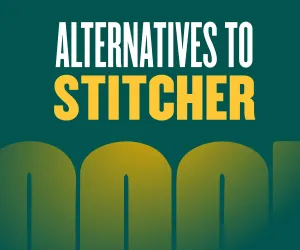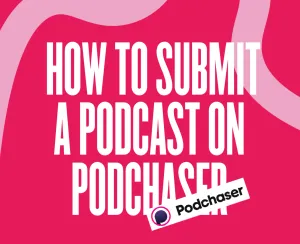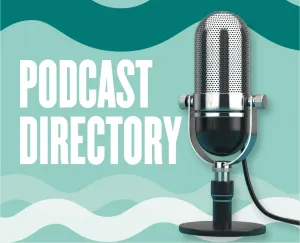Congratulations! You've produced an amazing podcast episode filled with captivating content.
Now comes the part where you may feel like you’re stepping into uncharted waters—getting your masterpiece onto the internet and connecting it with your target audience. Welcome to the world of podcast distribution!
This crucial step is what sets your podcast up for success, ensuring that it reaches eager listeners far and wide. After all, what good is an incredible podcast if nobody gets to experience it?
Because the distribution process is so important to a successful podcast, we’re going to break down everything you need to know about it here, starting with the two most important components, RSS feeds and podcast directories.
RSS Feeds
At the core of podcast distribution lies the RSS (Really Simple Syndication) feed, which is an XML file that contains essential details and audio media files associated with your show. Think of this document as the beating heart of your podcast, constantly ingesting the important data of your show and pumping it out into the world.
To get specific, the RSS feed consists of several essential components that work together to organize and deliver your podcast content. These components include:
Channel Information: This is the metadata about your podcast channel, such as the title, description, language, and author. It provides general information about your podcast that helps listeners understand what your show is about.
Episode Items: Each episode of your podcast is represented as an item within the RSS feed. These items contain specific information about each episode, such as the title, description, publication date, duration, and a unique identifier. Additionally, episode items can include the episode's audio file URL, show notes, artwork, and any other relevant metadata.
Enclosures: The enclosure tag within an episode item is a crucial component of the RSS feed. It specifies the location (URL) of the audio file associated with a particular episode. This allows podcast apps and directories to fetch and download the audio file for playback.
Categories: Categories help classify and categorize your podcast content. They provide a way for listeners to discover your show based on specific topics or genres. You can assign one or multiple categories to your podcast episodes within the RSS feed.
Publication Date and Time: Each episode item includes the date and time when the episode was published. This information helps podcast apps and directories display episodes in chronological order and allows listeners to find and access the latest episodes.
When you publish a new episode or make changes to your podcast, the RSS feed is updated accordingly. Podcast directories and platforms rely on this RSS feed to automatically fetch and display your episodes to their users. By submitting your RSS feed to various directories, you can ensure that your podcast is syndicated across multiple platforms, reaching a wide audience.
So if distributing your podcast requires submitting an RSS feed to podcast directories, how do you go about getting an RSS feed? We’re so glad you asked!
Creating your RSS feed
In theory, how you approach creating your RSS feed depends on whether you’ve chosen to host your podcast on your own website or use the services of a podcast hosting platform. However, very few first-time podcasters choose to shoulder the hosting burden themselves–and there are compelling reasons behind this inclination that go beyond the added layer of technical complexity it brings.
One significant challenge of DIY hosting arises from the large file sizes of podcast episodes, which make storing them directly on your website impractical. While a podcaster’s primary goal is to reach as many listeners as possible, bandwidth limitations can quickly become a serious concern with those large files if your show becomes popular. A sudden surge in downloads might lead to your website being shut down or result in unexpected expenses to cover excessive usage. It isn’t a worthwhile tradeoff for somewhat more freedom and flexibility in setting up your RSS feed.
All that is why most podcasters choose to use a hosting platform, which eliminates the headaches and technical complexities associated with self-hosting. Platforms such as Libsyn, Podbean, and Anchor offer integrated solutions that are particularly beginner-friendly, making it easier to create and manage your RSS feed. While each platform has its own specific procedures and requirements, the general process remains consistent.
To get started, you'll need to sign up for an account on your chosen hosting platform and follow the provided setup instructions. During the setup phase, you'll be prompted to enter details about your podcast, including its title, description, artwork, and episode metadata. This information helps create a comprehensive profile for your podcast.
Once you've completed the initial setup, the platform will automatically generate an RSS feed for your podcast. By utilizing a hosting platform, you can focus more on creating content and leave the technical aspects to the platform's automated processes. Moreover, these platforms often offer additional features such as accurate download statistics, giving you valuable insights into your podcast's performance.
What is a private RSS feed?
A private RSS feed, also known as a password-protected or secure RSS feed, offers a way to share exclusive content with a select audience. Unlike public RSS feeds that are accessible to anyone, a private RSS feed requires authentication to access its content. This means that only individuals with the necessary credentials, such as a password or unique authentication key, can unlock and enjoy the content within the feed.
Private RSS feeds are ideal for delivering premium or members-only content to a specific group of subscribers. If you have a membership site, online course, or a subscription-based podcast, a private RSS feed ensures that only paying members can access your exclusive content.
Private RSS feeds are also useful in corporate settings, allowing internal teams to share confidential information or updates securely. Schools and universities can use private feeds to limit the distribution of course materials or recordings to enrolled students. Essentially, private RSS feeds offer a controlled and secure way to deliver content to a restricted audience.
Setting up a private RSS feed involves a few steps, and again, the specific process may vary depending on the podcast hosting platform you choose. Here's a general outline of how you would go about setting up a private RSS feed:
- Choose a podcast hosting platform that offers private RSS feed functionality: Some popular platforms that support private feeds include Patreon, which provides a membership platform with built-in private RSS feed support, and Supercast, which offers tools specifically designed for private podcasting. Additionally, platforms like Memberful and Podbean also provide options for setting up private feeds alongside their regular hosting services.
- Sign up and configure your account: Create an account on the chosen hosting platform and complete the necessary setup steps. This typically involves providing details about your podcast, such as the title, description, and artwork.
- Set up the privacy settings: Within the hosting platform's settings or subscription options, you'll find features related to private or premium content. Enable the private feed functionality and choose the access control method you prefer, such as password protection or member authentication.
- Generate private RSS feed links: The hosting platform will generate unique URLs for your private RSS feeds. These links are what you'll share with your intended audience. Depending on the platform, you may have different feed URLs for different subscription tiers or member types.
- Share and distribute your private RSS feed: Communicate the private RSS feed link to your intended audience through your preferred channels, such as email, member-only websites, or exclusive community platforms. Make sure to provide instructions on how to access and use the private feed.
Again, each podcast hosting platform will have its own specific features, limitations, and pricing structures related to private feeds.
Podcast Directories
Podcast directories are online platforms or apps that host and categorize podcasts, making it easier for listeners to discover and subscribe to new shows. These directories act as search engines specifically designed for podcasts, where users can explore different categories, browse popular shows, and subscribe to their favorite podcasts.
Submitting to podcast directories
To distribute your podcast effectively, it's crucial to submit your RSS feed to popular podcast directories. Each directory has its own submission process, but it generally consists of some form of the following steps:
- Creating an account: This typically involves providing basic information such as your name and email address, as well as creating a username and password.
- Submitting your podcast: Once your account is set up, you can proceed to submit your podcast. This involves providing necessary details like the podcast title, description, category, and artwork. You will then be instructed to input the URL your hosting platform gave you for your podcast's all-important RSS feed.
- Optimizing your listing: After submitting your podcast, it's essential to optimize your listing to attract more listeners. This includes writing a compelling and concise podcast description that accurately represents your show. Additionally, you may have the option to add relevant keywords or tags to improve search visibility. Some directories may allow you to customize your podcast's cover art or provide additional information such as episode release schedule or contact details.
Remember, the submission process will vary slightly across different podcasting directories. It's important to review the specific guidelines provided by each directory to ensure your submission meets their requirements and maximizes your podcast's visibility.
The big 4 podcast directories
While many other smaller directories exist, by submitting your podcast to the following big players you will dramatically increase your show’s reach and accessibility. Getting on these directories means that a huge swath of listeners will then be able to search for your podcast by name, topic, or keywords, and subscribe to receive automatic updates whenever you release new episodes.
- Apple Podcasts: As one of the largest and most influential podcast directories, Apple Podcasts is essential for reaching a vast audience. With around 28 million active users and a strong market presence, this directory is seen by many as setting the standard for podcast consumption. Its user-friendly interface, curated content, and integration with Apple devices make it a go-to platform for podcast listeners. Submitting your podcast to Apple Podcasts ensures maximum visibility and the potential to attract a significant number of listeners. Additionally, many smaller directories pull their content from Apple Podcasts, so your show will automatically show up on those platforms as well.
- Spotify: With its immense user base and commitment to podcasting, Spotify has become a major player in the podcasting industry. Its seamless integration with music streaming and personalized recommendations make it an attractive platform for both music and podcast enthusiasts. Submitting your podcast to Spotify can help you tap into Spotify's massive listener base and benefit from its powerful algorithm-driven recommendations.
- Google Podcasts: As part of the Google ecosystem, Google Podcasts has a distinct advantage in terms of discoverability and search visibility. By adding your podcast to Google Podcasts, you increase the chances of your show appearing in Google search results and gaining exposure to a broad audience. With Google's extensive reach and integration across various devices and platforms, Google Podcasts is a valuable directory to ensure your podcast reaches as many listeners as possible.
- Amazon Music: Amazon Music has emerged as a significant player in the podcasting space. With millions of active users, including Amazon Prime members, choosing to submit your podcast to Amazon Music can expand your listener base and increase discoverability. Amazon Music's integration with Alexa devices and personalized recommendations based on user preferences offer unique opportunities for reaching engaged listeners.
Beyond the Big Directories: More Ways to Distribute Your Podcast
While submitting your podcast to popular directories is crucial for expanding your reach as widely as possible, there are additional avenues you should explore. By tapping into alternate directories and leveraging other platforms you may be able to capture smaller but more targeted and engaged audiences. These additional distribution channels can be particularly valuable if your podcast caters to a specific niche or if you're looking to get the attention of a particular community.
Learn Out Loud: This is a platform that specializes in educational and self-improvement content, making it a great choice if your podcast falls within these categories. By submitting your podcast to Learn Out Loud, you can tap into a niche audience actively seeking knowledge and personal development resources. It offers the opportunity to reach learners, educators, and individuals passionate about expanding their intellectual horizons. To submit your podcast to Learn Out Loud, visit their website and follow their submission guidelines, which typically involve providing basic information about your podcast and its educational focus.
Listen Notes: Listen Notes is a comprehensive podcast search engine that allows users to search for podcasts by topic, keywords, or even named guests. With its advanced search capabilities, Listen Notes helps users find specific episodes or podcasts that align with their interests. To submit your podcast to Listen Notes, you can use their "Add Your Podcast" feature on their website.
YouTube: While primarily known as a video-sharing platform, YouTube offers a unique opportunity to distribute your podcast in an audiovisual format. By creating a dedicated YouTube channel for your podcast, you can tap into YouTube's massive user base and reach audiences who prefer consuming content through videos. You can convert your podcast episodes into video format by incorporating visuals, such as static images, waveform animations, or even full video recordings. Uploading your episodes to YouTube not only expands your podcast's reach but also allows you to engage with viewers through comments, likes, and shares. To get started, just create a YouTube channel.
Social media channels: Platforms such as Facebook, Twitter, Instagram, and LinkedIn offer robust communities and tools to engage with your target audience. By leveraging social media channels you can utilize your existing online presence to share podcast episodes, highlight guest interviews, and drum up engagement and anticipation with your followers.
Podcastle’s Distribution Solution: The Hosting Hub
Podcastle's new Hosting Hub is a game-changer for podcasters looking to simplify their workflow and streamline the distribution process. As part of the Podcastle suite, which includes the Recording Studio, Audio Editor, and Video Editor, the Hosting Hub offers a comprehensive solution for podcasters to publish their shows and episodes seamlessly, all within the platform.
One of the standout advantages of the Hosting Hub is its ability to serve as an RSS feed. This means that once you upload and publish your content, you can directly link it to your desired podcast platforms.
Podcastle also takes its hosting duties a step further by providing users with their own dedicated landing page on the platform. This means you can direct your audience to a professional-looking page specifically designed for your podcast. It's a great way to establish your brand and create a centralized hub where listeners can easily access and play your content.
What's more, using Podcastle won’t confine your work to a single platform. With the Hosting Hub, you have the flexibility to embed any of your hosted content into your own personal website or media players. This allows you to extend your reach and make your podcast easily accessible wherever your audience prefers to listen.
Wrapping Up: Podcast Distribution Best Practices
Remember, getting your podcast out of your computer and into the world is an ongoing process that requires continuous effort and adaptation. As your podcast evolves you should continue to explore new distribution channels, engage with your audience through social media, and seek collaborations with other podcasters to expand your reach.
Here are some other best practices to follow to ensure continued success with growing your audience:
Optimize your podcast listing: Take the time to optimize your podcast listing by crafting a compelling description, selecting appropriate categories, and designing eye-catching artwork. This optimization improves search visibility and entices potential listeners to give your podcast a try.
Leverage your website or blog: Utilize your website or blog as a hub for your podcast. Create a dedicated page that showcases your episodes, provides show notes, and offers easy subscription options. This central location becomes a valuable resource for both new and existing listeners.
Encourage reviews and ratings: Reviews and ratings play a crucial role in attracting new listeners. Encourage your audience to leave reviews and ratings on podcast directories. Positive feedback not only boosts your podcast's credibility but also improves its ranking in search results.
Keep a consistent publishing schedule: Consistency is key when it comes to podcasting. Establish a regular publishing schedule that your audience can rely on. Whether it's weekly, biweekly, or monthly, maintaining a consistent release schedule helps build anticipation and loyalty among your listeners.
Monitor analytics: Stay informed about your podcast's performance by monitoring analytics. Most podcast hosting platforms provide valuable insights into download numbers, listener demographics, and engagement metrics. Analyzing this data helps you understand your audience's preferences and tailor your content accordingly.
Keep current with podcasting trends: Stay up-to-date with the ever-evolving podcasting landscape. Stay informed about industry trends, emerging platforms, and changes in listener behavior. Embrace new technologies, explore innovative formats, and adapt your strategies to remain relevant and attract new listeners.
How to Distribute a Podcast
In brief, here are the steps you need to take to distribute a podcast:
1) Create your RSS feed so people can automatically receive episodes
2) Submit the RSS feed to big podcast directories like Apple and Spotify
3) Look for alternative distribution, i.e. through social media channels
4) Market your podcast using SEO, paid ads, word-of-mouth and PR.
![How to Distribute a Podcast [2023 Guide]](/blog/content/images/size/w1200/2023/09/podcast-distribution.webp)









